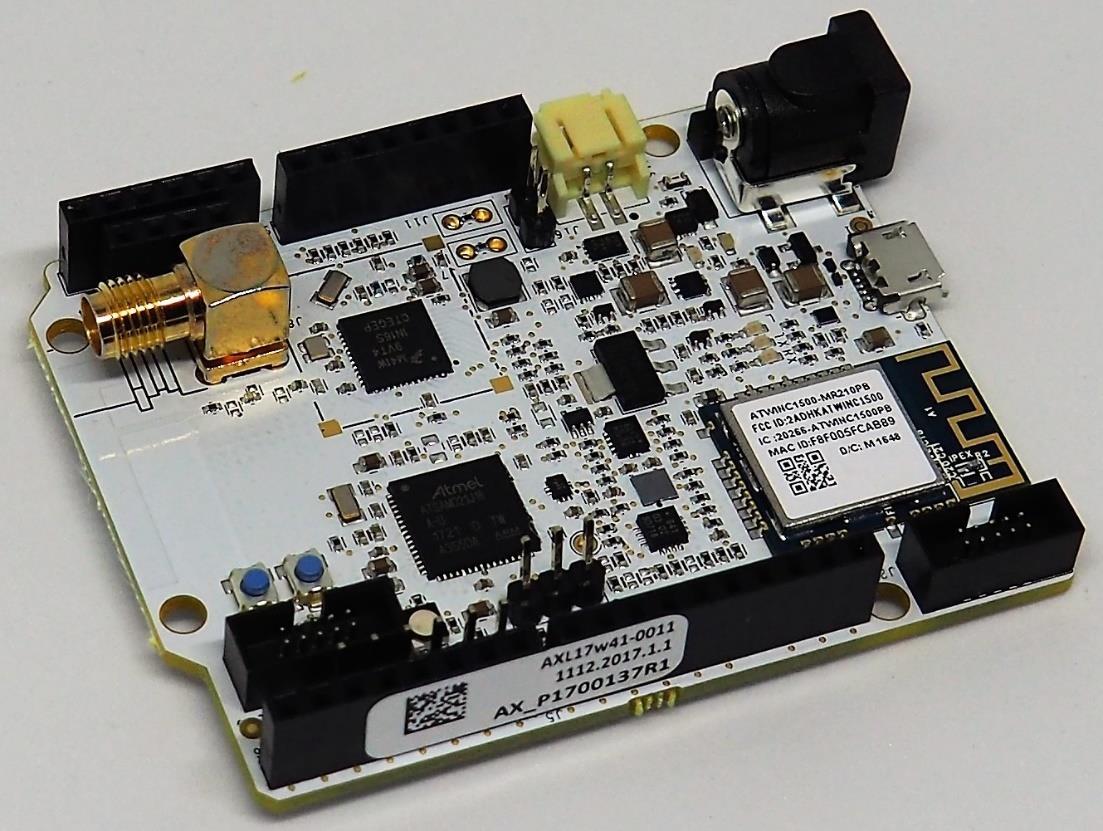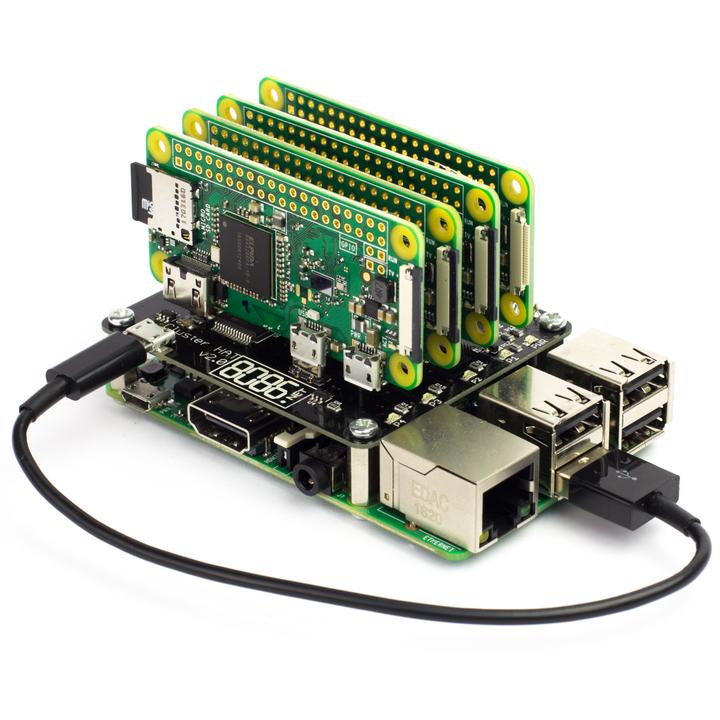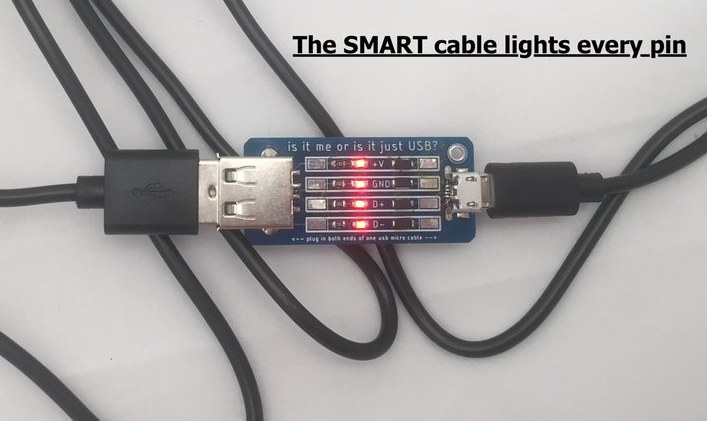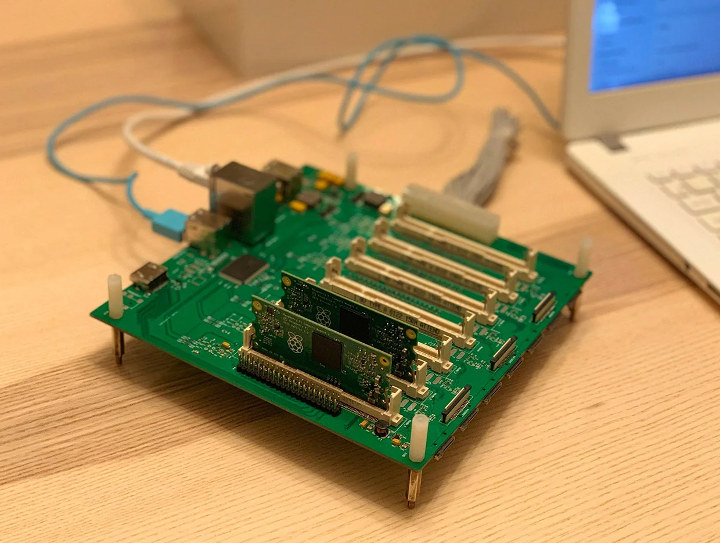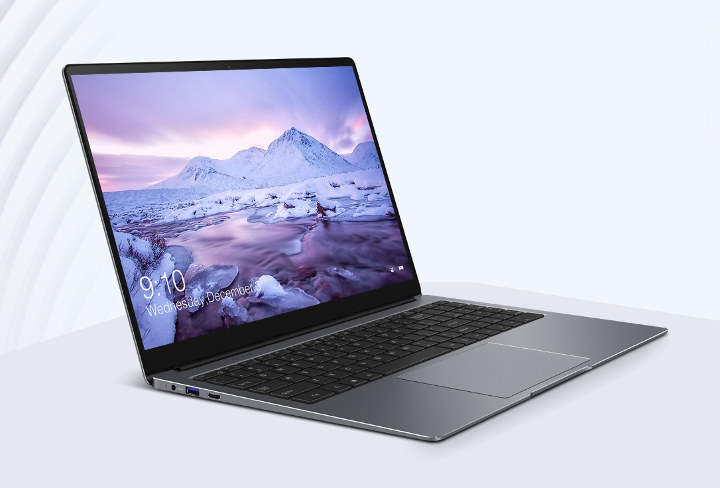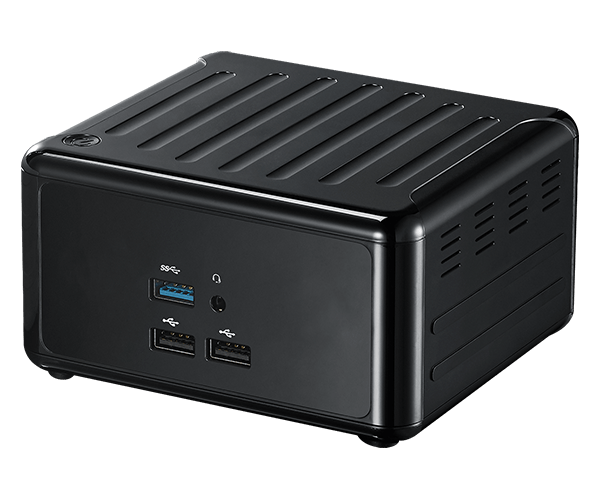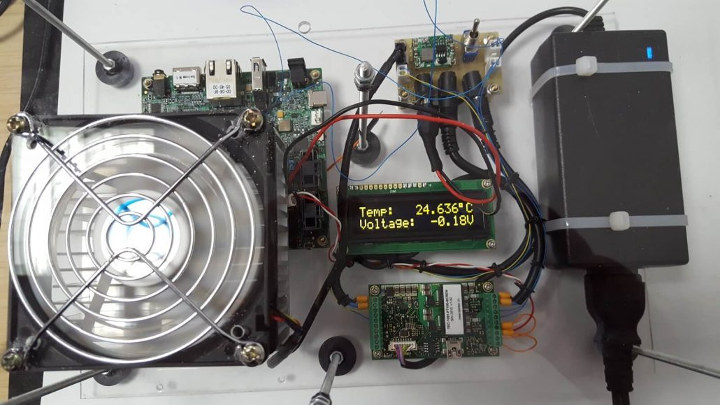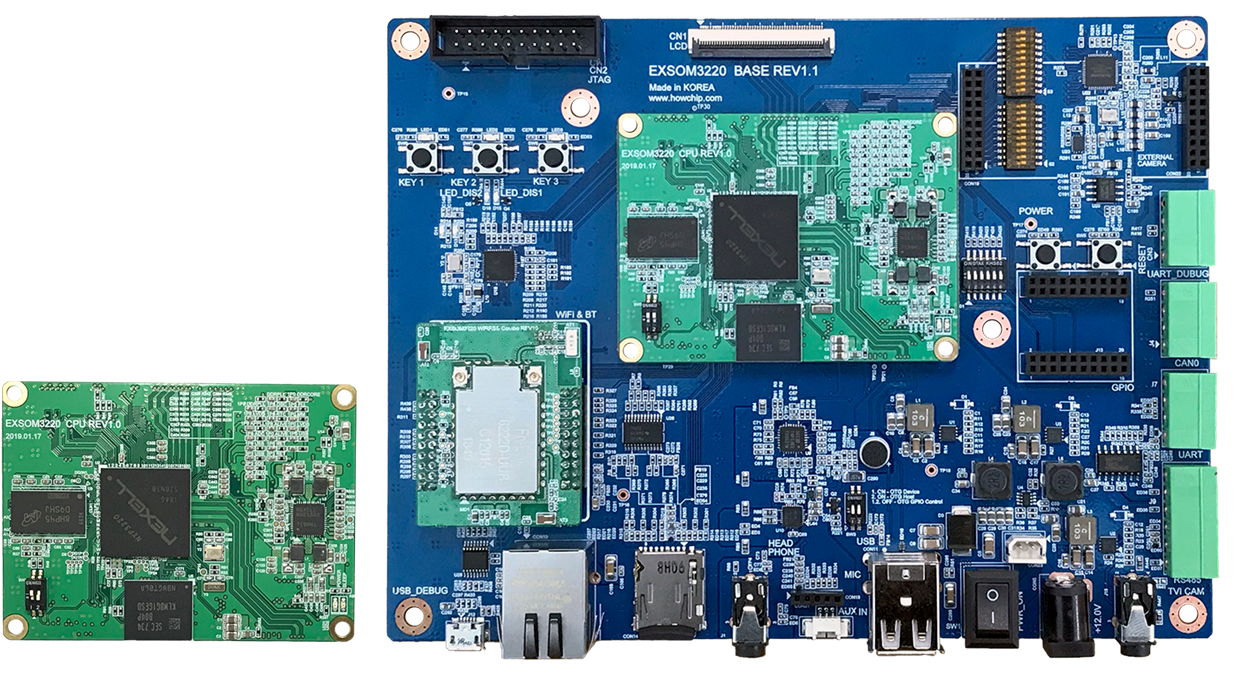The new Arrow ASME Tiger board is the latest addition to the ASME line up, with an eye towards IoT hardware prototyping. The board carries two MCUs for different types of development depending on the operators need. The board is Thread and WiFi ready, and the Tiger is also Arduino compatible. The MCU’s are as follows: The ATSAMD21J18A-64 Ultra-low-power microcontroller using the 32-bit ARM Cortex-M0+ processor. The WiSoC is the KW41Z which is an ultra-low-power, highly integrated single-chip device that enables Bluetooth® low energy (BLE) v4.2 and IEEE® 802.15.4 RF connectivity for portable, extremely low-power embedded systems. The working unit is for very low power applications. The integrated balun reduces system cost and board area, and the sensors are plentiful and easy to access. You’ll find a user guide (PDF), as well a bootloader and sample code on Github. Specifications for the SMART SAMD21 Memory 256KB in-system self-programmable Flash 8KB […]
Cluster HAT Interfaces up to 4 Raspberry Pi Zero to Raspberry Pi 2/3/4 Board
Cluster HAT is a solution to the problem of building cluster computing. Distributed computing is difficult already, and this tiny hardware kit is one answer to the problem. Although building a computer cluster is not that easy, it is one of the most impressive Raspberry Pi projects. Why Cluster HAT? The Cluster HAT (Hardware Attached on Top) interfaces a (Controller) Raspberry Pi A+/B+/2/3/4 with 4 Raspberry Pi Zeros. It is configured to use USB Gadget mode. Also, it is an ideal tool for teaching, testing or simulating small scale clusters. Cluster HAT leverages the flexibility of Raspberry Pi by allowing programmers to experiment with cluster computing. It is important you know that the HAT does not come with a Raspberry Pi or Pi Zero. The two are purchased separately. Pimoroni, the manufacturer, provides assembly and control instructions on its product page. Also, they explain 3 ways of setting up the […]
$10 Is it me or is it is just USB? Board Quickly Tests your USB Cables
USB 2.0 and 1.1 cables are supposed to come with four signal: GND and 5V for power, and D-/D+ for data. Some chargers come with cables without the data cables. It may “work” for charging, but if for some reasons you decided to use that USB cable for tasks requiring data this won’t work, and you may not find out easily the reason at first. Importantly the data lines can also be used during charging to request more power from the host device, so if they are missing slower charging may ensue. You could always use a multimeter to check your cables, but “iUSB cable testers it me or is it just USB? ” board provides a simpler and faster solution by indicating which wires are connected in your cable with LEDs. The developer, named nerfhammer, separate cables with and without data lines as follows: Basic USB cables cannot transfer […]
Turing Pi Clusterboard Takes up to 7 Raspberry Pi Compute Modules
We’ve already covered several cluster solutions based on Raspberry Pi boards such as Bitscope Blade with up to 40 Raspberry Pi boards, a 16 Raspberry Pi Zero cluster board prototype, Circumference “datacenter-in-a-box” with up to 32 Raspberry Pi 3 B+ boards. If you want something more compact, it makes sense to develop a platform with Raspberry Pi Compute Modules instead, and we’ve already published news about MiniNodes Raspberry Pi 3 CoM Carrier Board that supports up to to 5 Compute Modules 3/3+ last year. There’s now another option with Turing Pi Clusterboard support up to 7 Compute Modules for applications leveraging Kubernetes, Docker, Jupyter Notebook, machine learning (TensorFlow/Caffe), and serverless stack. Turing Pi specifications: 7x Sockets for Raspberry Pi Compute Module 3/3+ Storage – 7x microSD card slots Video Output – 1x HDMI port, MIPI DSI connector Audio – 1x 3.5mm audio jack Camera I/F – 2x MIPI CSI connectors […]
Chuwi LapBook Plus Apollo Lake 4K Laptop Sells for $440 (Promo)
A little over two years ago, I reviewed Chuwi LapBook 14.1 Apollo Lake laptop with Windows 10, but it happened to run Ubuntu 17.04 fairly well, until the company made a major redesign of the laptop a few months later, and updated the BIOS to disable the Linux option. So I would not recommend Chuwi laptop if you’d ever want to run a Linux distribution, but if you’re after a affordably priced laptop with 4K (3840×2160) display, the upcoming Chuwi LapBook Plus laptop, also based on an Apollo Lake processor, may be worth a look. Chuwi LapBook Plus specifications: SoC – Intel Atom x7-E3950 quad core Apollo Lake (Embedded) processor @ 1.6 GHz / 2.0 GHz (Turbo) with Intel HD Graphics 505,up to 500MHz; 12W TDP System Memory – 8GB LPDDR4 (dual-channel) Storage – 256GB SSD, plus M.2 2280 socket for optional SATA SSD Display – 15.6″ 4K HDR display […]
ASRock 4×4 Box is a Compact Mini PC Based on AMD Ryzen Embedded R1000/V1000
The mini PC market has a new product from ASRock, a company, well known for its motherboards and Mini PCs. Following up on their iBOX-R1000 Ryzen Embedded R1000 mini PC, the ASRock 4×4 Box is now available with either the AMD Ryzen Embedded R1000 processor or the AMD Ryzen Embedded V1000 processor in a smaller form factor. Right now, the new mini PC targets the industrial sector, and not the consumer market. This addition to the industrial motherboards and rugged mini PCs line, the 4×4 Box R1000 and V1000 offers more features and are designed to fit in a smaller case, hence the 4×4 name which likely refers to the 4″x4″ dimensions of the motherboard. The AMD Ryzen Embedded is finding its way into all kinds of industrial and medical uses, because of its Radeon VEGA graphics capability and processing enhancements over the R or C series processors. The ASRock […]
BayLibre TPMP Lowers the Cost and Time of PVT Characterization
If you don’t quite understand the title of this post, don’t worry that’s normal! So let me explains. TPMP stands for Thermo-regulated Power Measurement Platform, and PVT (Power, Voltage, Temperature) characterization is a step in semiconductor manufacturing that involves testing wafers with various voltages, clock frequencies, and temperatures – known as Operating Performance Points (OPP) – to see how the properties of the wafer change. The equipment required to perform this characterization is usually very expensive, and the process takes time. So BayLibre was tasked by one of their customers to automate the process, and find a lower cost solution. That’s how BayLibre TPMP came to life. The TPMP is comprised of six main hardware components in order to measure NXP i.MX8 processor die-temperature: Peltier element Meerstetter TEC-1091 Peltier controller Fan Heatsink temperature sensor Chip external temperature sensor LCD display to monitor temperature, voltage, and current. The TEC-1091 chip controls […]
Howchip Introduces Scorpion 3 & Scorpion 5 Boards Powered by Nexell Processors
Howchip has announced 2 development boards based on Nexell processors. Even though pricing is not available yet for these boards, we can now know their main features. Both development boards have been launched as COM & carrier development kits. Scorpion 3 is mainly focused for developments where a powerful dual-core Arm Cortex-A7 NXP3220 featured with Linux 4.14 can be enough, and Scorpion 5 seems to be focused for applications which may have more intensive requirements, for instance in terms of user interface, being based on a quad-core Arm Cortex-A9 NXP4330Q featured with Android Nougat and with UI specific features like 3D-Graphics Accelerator. Even though there is not so much information, Howchip also announces as “coming soon” the Scorpion 1 board, based on Exynos i T200 as an integrated IoT solution. Howchip Scorpion 3 Howchip Scorpion 3 is a great embedded computer in a board whose form factor is only 68x50mm. […]


